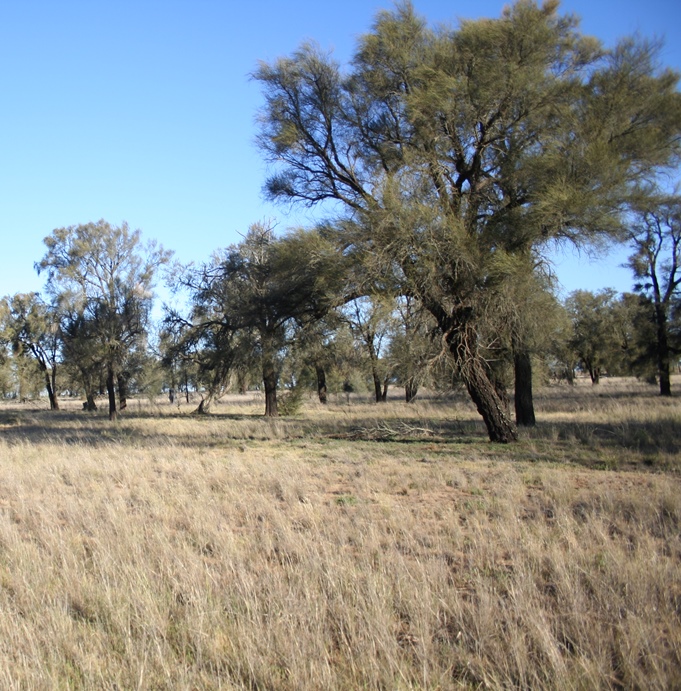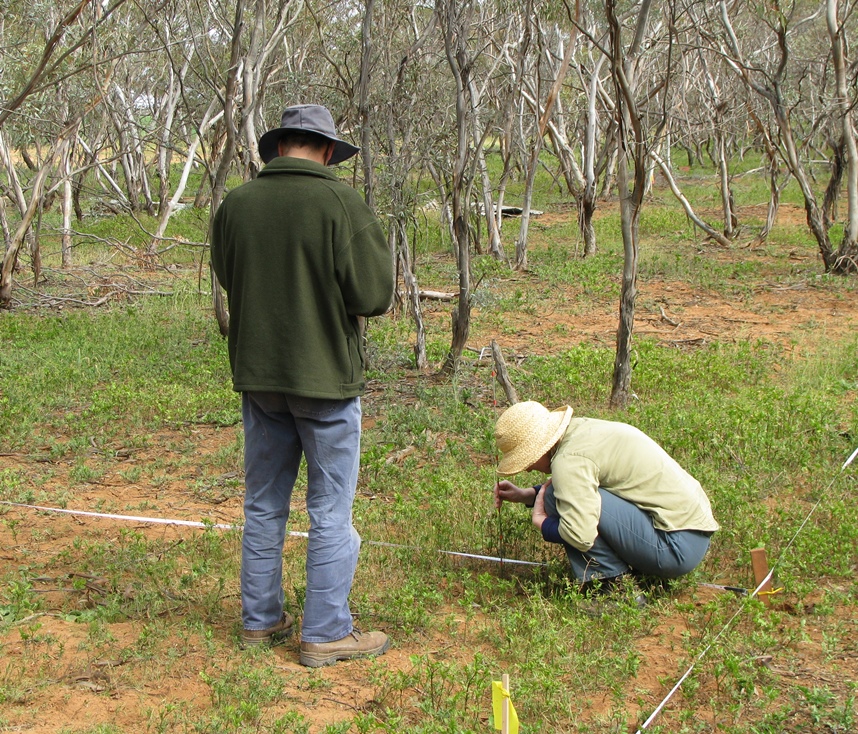The dryland cropping landscape of the Mallee is one of the most stressed systems in Australia. The majority of original native vegetation has been cleared for pasture and agriculture. Much of the remaining native vegetation exists as small (less than 10 ha), isolated remnants, many of which are still periodically grazed. Overgrazing from livestock, particularly in times of drought, can result in an increase in bare ground (and subsequent erosion), soil compaction, altered nutrient cycling (including water) and levels, increased weed abundance, and reduced recruitment and survival of native plants. The Mallee Catchment Management Authority (CMA) offers incentives to encourage the construction of Stock Containment Areas (SCAs) and exclusion fencing under the Mallee Land Protection Incentive Scheme. There is a need to better assess whether these stock management practices are contributing to the protection and maintenance of native vegetation extent and quality.
ARI has developed and field tested a monitoring protocol and designed a long-term monitoring strategy that assesses the impact of SCAs and stock exclusion fencing on the quality of priority remnant vegetation. Implementing this strategy will enable the Mallee CMA to document long-term changes and encourage land management practices and associated incentives that reduce threats to native vegetation.
Four Ecological Vegetation Classes (EVCs) that are representative of the region were selected to develop the strategy: Plains Woodland (EVC 803), Plains Savannah (EVC 826), Ridged Plains Mallee (EVC 96), and Woorinen Mallee (EVC 824).


Our monitoring protocol recommends the following sampling design. For a target EVC (e.g. Woorinen Mallee) sampling is undertaken on farm properties with SCAs and properties without SCAs. Grazed and ungrazed remnants on each property are then randomly selected for detailed sampling. Ecological components measured to document long-term change include vegetation structure and recruitment, plant species cover and abundance, canopy cover, and soil nutrient sampling. Photos have been taken from fixed points to visually document changes over time. This project was funded by the federal Government Caring for our Country scheme, through the Mallee CMA.
For further information contact: claire.moxham@delwp.vic.gov.au or michael.duncan@delwp.vic.gov.au
See the Mallee CMA website for more information on the monitoring strategy, incentives for stock containment areas or stock exclusion fencing.
Two fact sheets detailing why stock inclusion is important, and what monitoring can tell us about outcomes for native vegetation are available:
Page last updated: 28/03/25